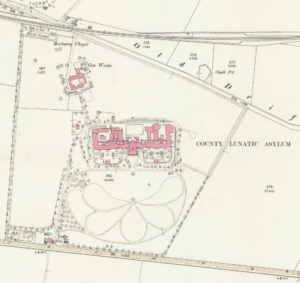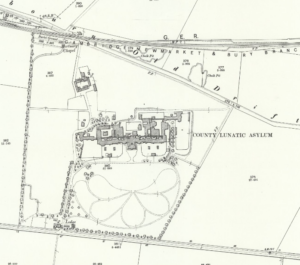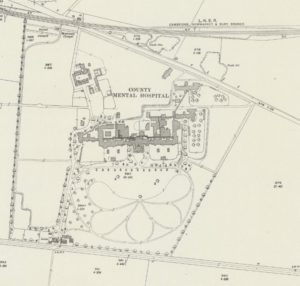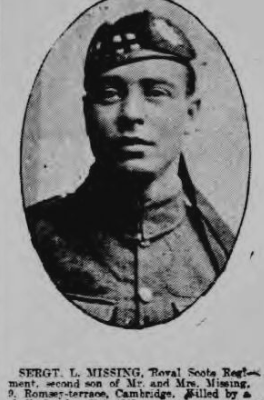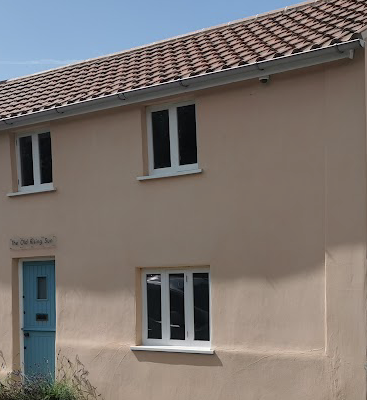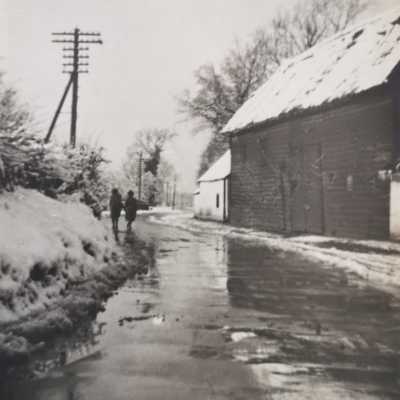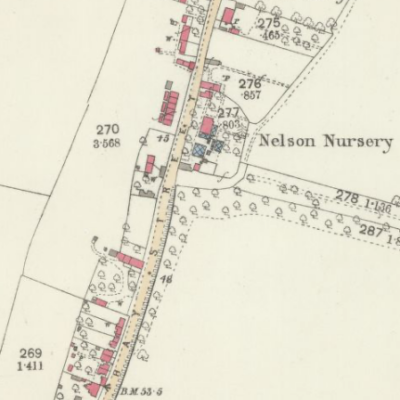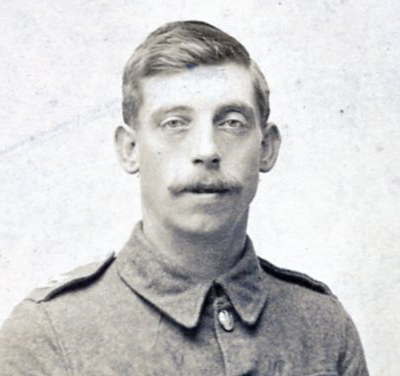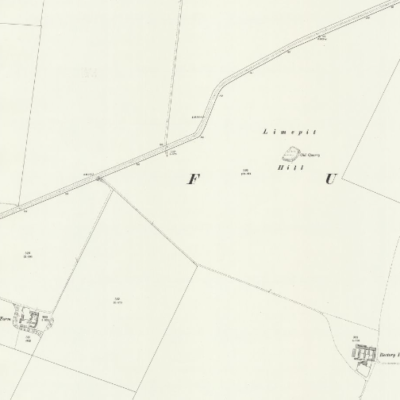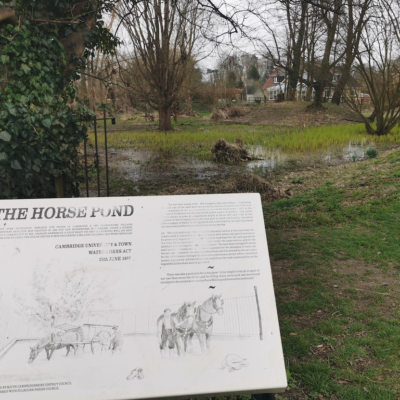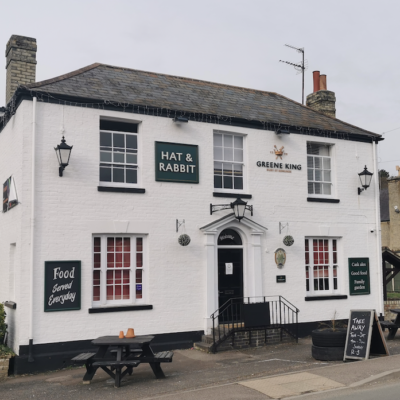Search by topic
- archaeology
- Building of Local Interest
- chapel
- charity
- church
- crime
- dressmaker
- fire
- Great Eastern Railway
- Listed building
- Mapping Relief
- medieval
- oral history
- poverty
- Public House
- Religious House
- Roman
- scholar
- school
- Then and Now
- tudor
- women
- work
- world war one
- world war two
Search by text
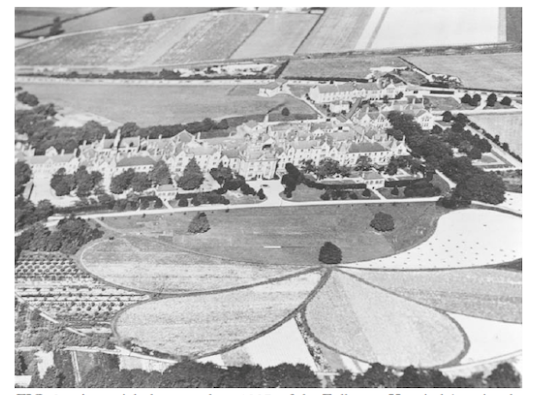 Fulbourn Hospital c.1927 (Cambridgeshire Archives)
Fulbourn Hospital c.1927 (Cambridgeshire Archives)Fulbourn Pauper Lunatic Asylum
History of the Cambridge Asylum
A history of Fulbourn Asylum can be found here:
https://en.wikipedia.org/wiki/Fulbourn_Hospital
Two key figures in the development of psychiatry and psychological understanding of those affected by trauma in WWI were William H R Rivers and Charles S Myers. Both attended patients at Fulbourn.
Fulbourn Hospital is on the Heritage at Risk Register
1861 in list of 198 inmates is
Richard Livermore, 45, plumber and painter, b Duxford. He is mentioned in William Farrington’s diary.
1875
George Brewster, a chimney sweep’s ‘climbing boy’ from Cambridge, employed by William Wyer, died after becoming stuck in a chimney he was cleaning at the asylum. He was brought out but died soon afterwards. The inquest into his death and the case against William Wyer were widely reported . Although the Chimney Sweepers Regulation Act of 1864, championed by the Earl of Shaftesbury, had made it illegal for those under the age of 21 to sweep chimneys, it was widely ignored. Earl of Shaftesbury brought forward a bill which was passed into law in September 1875, which required chimney sweeps to be authorized by the police to carry on their business in a district.
George Brewster’s death, officially aged 14, was registered Jan-Mar 1875, in Chesterton.
Following research by Joanna Hudson, a Blue Plaque to honour George’s life was announced in February 2022.
https://en.wikipedia.org/wiki/Chimney_sweep#History
https://www.historic-uk.com/CultureUK/History-Boy-Chimney-Sweep/
The Last Climbing Boy is a film published on Vimeo commissioned by the Guild of Master Chimney Sweeps:
Press accounts of George Brewster case:
Edinburgh Evening news 13.3.1875: Death of a lad in a flue. An inquest was held at Fulbourn Asylum Cambridge yesterday as to the death of George Brewster between 14 and 15 years old. Deceased was sent by his master, William Wyer, a chimney sweep of Cambridge, up a flue in the Asylum and he was taken out a few minutes afterwards in a dying state. Dr Bacon the superintendent of the Asylum, applied all possible remedies but the poor lad died within an hour from suffocation caused by the presence of soot in the lungs and windpipe. A verdict of manslaughter was returned against Wyer.
Cambridge Independent News 20.3.1875: The Assizes: William Wyer (55) master sweep, manslaughter of one George Brewster at Fulbourn
Cambridge Chronicle and Journal 27.3.1875: The Climbing Boy Case at Fulbourn: William Wyer, 55, chimney sweep, Cambridge surrendered to his bail and pleaded not guilty to the charge of the manslaughter of one George Brewster at Fulbourn on the 11th Feb. last. Mr Merewether for the prosecution; Mr Naylor for the defence. Mr Merewether in stating the case to the jury said that in large towns, no infraction of the humane law in reference to climbing boys was heard of and it was greatly to be regretted that an infraction of it should have taken place here. Perhaps no on more regretted it than Wyer himself. The Act provided against young persons under 21 entering chimneys or flues, and against the admittance of boys under 16 into the house where the chimney or flue was to be swept. But in this case he should be able to show that the poor boy Brewster was only about 12 years of age, although supposed to be 14. He was born in London, and his brother would give evidence as to the period of his birth. After narrating the facts, as to the directions given to the boy by Wyer, and the dimensions of the flue, Mr Merewether submitted that the prisoner was guilty of manslaughter. The prisoner had not been before the magistrates but that was not the fault of those who conducted the prosecution; for though at first it was thought needless to incur the cost of a magisterial inquiry after committal by the coroner, Wyer was summoned last week but did not appear. He now understood from Mr Naylor that the prisoner was too unwell to attend and he accepted the statement. Deputy Chief Constable Stretten said that from instructions he received he went to the district registry for the hamlet of Radcliffe in London. He found there the register of George, son of William and Mary Ann Brewster. He subsequently met prisoner and arranged for him to appear before magistrates. The magistrate attended but Wyer did not attend. By Mr Naylor: Did not know he was ill at the time.
Barnard Brewster, brother of the deceased, said that so far as he knew, the deceased would have been 12 of age next May. Their father lived in Twine Court Shadwell where the deceased was born. His mother’s christian name was Rebecca. He was born in the May after the Prince of Wales was married, in 1863. Witness saw the deceased in Cambridge a fortnight before his death. His brother William adopted the child. Their mother was ill at the time and his brother William said he would bring up the child as one of his own. William and his wife (Mary Ann) had no children of their own. They lived in Emma Terrace, Radcliffe at the time. His sister in law’s maiden name was King. [Mr Merewether here put in a copy of the certificate of birth mentioned by Mr Stretten. The child had been registered by William and Mary Brewster who were registered as the parents.] Witness Brewster said he saw the body of the deceased after death. He spoke to Wyer about the state of the body and asked how it was that the skin was rubbed off the hands, the ears and face? Wyer replied “It rotted off.” Witness replied it could not have done so in eight days. Wyer then made use of a coarse expression.
Mrs Brewster, wife of John Brewster, residing in Cambridge, said the time she first knew the deceased boy was when he was living with William Brewster. She had the boy from William. In November last Wyer took the boy, and said he should not do brush work for two years. She believed Wyer used him well whilst he (the boy) was alive.
Francis Mason [of Church lane, Fulbourn], stoker at Fulbourn Asylum said the flues of the boilers were cleaned about three times a year. There were three boilers, of different sizes. The boy Brewster went into a flue 12 inches by 6 inches. They are brickwork flues and run about 10 or 12 feet along the boilers. Wyer swept the flues. The boy Brewster was there in November, and he then got into the bottom flue. In February they commenced sweeping the flues on the 8th. Wyer, his son, and deceased were present. They cleaned the left hand boilers first and the fires at the right hand boilers were let out ready for Thursday the 11th. on the latter day the boy was there with Wyer. The prisoner raked as much as he could out of the bottom flue, and told the boy to get in. He told the boy to pull his clothes off. The boy pulled off his jacket and waistcoat, put on a cap which came down over his chin, and got into the flue. Witness went into the next room and on returning he found the boy in Wyer’s arms in an exhausted state. Wyer was undoing the handkerchief which fastened the cap on. Witness sent for Dr Bacon. Wyer was in the room the whole time. Witness believed that from the first time he saw the boy go in to the time when he was in Wyer’s arms, would have been about fifteen minutes. Cross-examined: Witness did not know that the sweeps had a meal before they commenced sweeping. Wyer usually brought a bag of food. He did not know that the deceased was ‘a voracious boy’ as he had not seen him eat. Witness did not know that a flue 12 inches by 6 inches was contrary to law. Mr Naylor said that by the 6th section of the Act they should not be less than 14 inches by 9 inches. The Judge said that the section in question did not apply in this case. Mr Merewether said the door of the flue was 12 inches by 6 inches. The flue was probably larger.
Frederick Patten, second stoker at the Asylum, said he saw the boy Brewster take his clothes off and put on the cap. Wyer was there and saw the boy go into the flue. The boy worked up and came back; Wyer then said, ‘Put your hoe [sic] up to the flue above” the boy said “It is up.” In about a minute and a half Wyer called but the boy made no answer. He called again but there being no reply Wyer pulled him out. The boy was out of sight a quarter of an hour, perhaps twenty minutes. When he talked about the hoe witness saw his legs and body. His head was in the flue.Witness went to fetch Dr Bacon. Wyer said he was very sorry. Cross-examined by Mr Naylor: Had seen Wyer at the Asylum frequently, and he seemed to treat those under him with kindness. Witness did not know about the Act of Parliament as to boys going into flues.
Dr Bacon deposed to being summoned to the deceased in the boiler house. Wyer, his son, the deceased, and Mason were there. The boy was supported in Wyer’s arms and was alive. Witness opened the boy’s mouth and removed the soot and stuff within. By this time another doctor had arrived. They washed out the boys mouth and gave him some brandy. Finding he did not recover, witness had him removed into the institution and placed in a bath; but he died in about half an hour. By order of the coroner he made a post mortem examination of the body. The arms were abraded and the head congested. In the chest there was a lot of blackish powder in the air passages and this extended into the minute air tubes of the lungs. There was a considerable layer of it in the windpipe, so much that it could be scraped off. The blood was dark and the whole lungs were congested. The cause of death was suffocation by the interference of the material we spoke of. Witness had not been aware that Wyer sent the boy into the flues.
By Mr Naylor: Did not notice that the boy had had food before. Any gradual process of suffocation would produce the same effects in the brain and lungs. The object of the brandy was to revive the boy. He had water first. Witness made no incision of the boy’s ear. The abrasions existed before he touched the body, and were caused by dragging the boy out.
Mr Richard Reynolds Rowe architect produced a plan of the flues and boilers. The size of the flue in question was 12 inches by 7 1/2 inches; it was square and 11 feet 2 inches long. Detective-sergeant Kirbyshire of the Cambridge Borough Police, proved serving Wyer, (amongst others) with a notice in 1864, respecting Lord Shaftesbury’s Acts relating to chimney sweeps. This concluded the evidence for the prosecution.
Mr Merewether then addressed the jury, and after arguing against the theory foreshadowed by Mr Naylor’s cross-examination that the boy was suffocated by other means than the soot from the flue, submitted that Wyer was certainly breaking the law when he sent the boy into the flue, and must take the consequence of an unlawful act. The size of the flue would not help Wyer’s case, even if of illegal dimensions. Mr Naylor submitted that the flue was an illegal one, and that therefore the builder of it was culpable. The Judge said that he was not trying the builder; and if one man did commit an unlawful act, it did not excuse another man for doing another unlawful act. Mr Naylor then submitted that the boy voluntarily entered the flue. The Judge pointed out that the Act provided against a master knowingly allowing a boy to enter a flue. Mr Naylor then addressed the Jury for the defence, urging that Wyer, owing to the smallness of the flue, was unable to employ his son – a full grown man – to enter the flue; and it was in consequence of this illegal structure of the flue that the boy came to be employed. The learned counsel then called evidence as to character.
Mr Al. Lyon said that Wyer had swept his chimneys for over 20 years and he never saw anything but kindly conduct on his part. Mr Tomlinson, C.E., manager of the Cambridge waterworks gave prisoner the character of being a kind-hearted man; as did also Mr Martin Bure of the Great Northern Hotel.
The learned Judge summed up. The Jury deliberated for scarcely one minute and found the prisoner guilty. The learned Judge in passing sentence said that nobody supposed that the prisoner contemplated the boy’s death at the time he told him to enter the flue. But a reasonable man would never have sent lad into such a flue as that, and the circumstance that the flue was smaller than usual told decidedly more against him than in his favour, because if it was wrong to send a boy into a flue of legal size, it was still worse to send one into a smaller flue. This was an extremely serious matter.It was the infraction of an Act passed for humane purposes – to prevent death and other injuries arising from young persons entering chimneys and flues, and to make the masters of them responsible in the absence of parents – to prevent them from being subject to this imminent peril, for such it was. The very means used to protect the boy – the rag over the mouth – was in itself an impediment to breathing.There had been a case of a similar kind tried by another learned judge, and if from the evidence before him he had found that the prisoner knew of that case, the sentence would be even more severe than what it would now be. He mentioned this to the prisoner and so to other chimney sweepers in order that they might know that in any similar case coming before him – and he believed that other learned judges would do the same – he should give a heavier sentence. In this case he should pass the same sentence as was passed in the case to which he had alluded; not that he was bound by that case but because his mind went with it. The sentence of the court would be that the prisoner be kept to hard labour for six calendar months.
Bury Free Press 27.3.1875: William Wyer was charged with the manslaughter of George Brewster at Fulbourn on the 12 ult. Mr Merewether appeared for the prosecution; Mr Naylor defended the prisoner. The prisoner is a master chimney-sweep and was employed on the day in question to sweep the flues at Fulbourn Lunatic Asylum. He brought the boy Brewster a lad 12 [sic] years of age, with him, and told him to get in the flue and clean it out. The boy went in the flue and remained there some time; when he came out he appeared much exhausted and died two days afterwards from having swallowed a quantity of soot and other impure matter. This prosecution was instituted under an Act of Parliament which renders the employment of boys under age as chimney-sweeps unlawful. The Jury found the prisoner “Guilty” and he was sentenced to six months imprisonment, with hard labour.
The conspicuous pattern in the grounds of the asylum is commented upon in an article in the History of Psychiatry 20 (4) pointed out by A. Leonidou in 2022.
The Cambridgeshire Asylum provides an unusual example of the combination of aesthetics and the agricultural use of the land. In front of the asylum huge petal-shaped beds were created. In an aerial photo taken about 1927 these beds appear to have been planted with crops and Stephanie Skene suggests that they would always have had an agricultural as well as decorative use. Here the curving paths would have allowed patients close access to the ordered land.
1905
There was an outbreak of typhoid. At the time William Arthur ‘Mac’ McCutchan was Senior Assistant Medical Officer.The Medical Superintendent caught the disease and ‘Mac’ was left in charge. Afterwards he was greatly praised for how he had coped with the crisis, but the strain ruined his health and he died the following year.
1925
Contribute
Do you have any information about the people or places in this article? If so, then please let us know using the Contact page or by emailing capturingcambridge@
License
This work is licensed under CC BY-NC-SA 4.0





